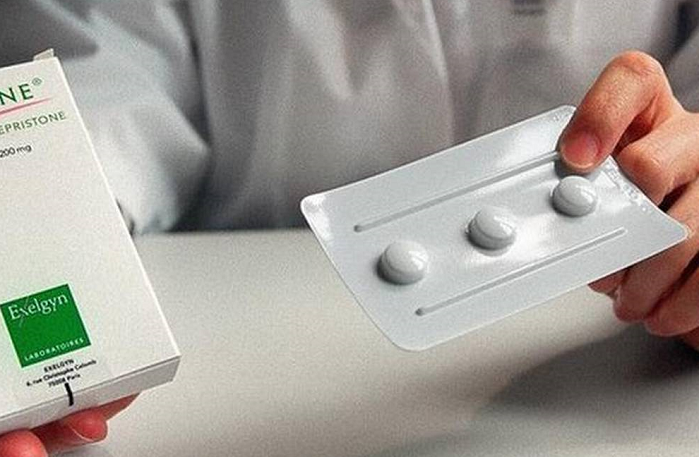Abortion activists keep saying that abortion pills are safer than Tylenol, ignoring how their very purpose is to kill unborn babies.
Millions of unborn babies have been killed with the abortion drug mifepristone, or RU-486, since its approval under the Clinton administration. Currently, it is used for almost half of all abortions in the U.S., according to the Guttmacher Institute.
Growing evidence shows that the abortion drug is not safe for mothers either – certainly not safer than over-the-counter pain relief medication, as the pro-abortion movement and some news outlets claim.
A study from the pro-abortion research group Gynuity provides evidence that the claim is false.
Live Action News analyzed the study, published in the journal “Contraception,” and confirmed that it disproves the popular safety claim. The Gynuity study “found an ER and urgent care visit rate of 6%” for women taking the abortion drug, which is “107 times greater than the rate for acetaminophen/Tylenol,” according to the report.
Another problem with the comparison is acetaminophen is much more widely and commonly used.
Please follow LifeNews.com on Gab for the latest pro-life news and info, free from social media censorship.
Here’s more from the report:
It’s entirely possible that more people go to the hospital after taking Tylenol – because more people take it in the first place. …
A valid comparison of hospital visit frequency must account for the frequency with which both drugs are taken. Fortunately, this data is available. This 2016 study … tracked the rate of annual ER visits relative to annual sales of the drug. It found that, for the year 2012 (the most recent year covered by the study), there were 282.1 acetaminophen-related ER visits for every 1 (one) million units sold. Assuming typical dosage to be equivalent to two tablets, this means that .056% of doses sold resulted in a hospital visit (282.1/500,000 = .00056).
In other words, the two studies show a .056 percent hospitalization rate for the over-the-counter pain medication and a 6 percent hospitalization rate for the abortion pill.
Other studies also indicate the risks of mifepristone are more common than what abortion activists often claim, with as many as one in 17 women requiring hospital treatment. A recent study by the Charlotte Lozier Institute found that the rate of abortion-related emergency room visits by women taking the abortion drug increased more than 500 percent between 2002 and 2015.
Another new study from the University of Toronto, “Short-Term Adverse Outcomes After Mifepristone–Misoprostol Versus Procedural Induced Abortion,” published in the Annals of Internal Medicine, found that one in ten women who took the abortion pill had to go to the emergency room, according to Pregnancy Help News.
Similarly, a 2009 study “Immediate Complications After Medical Compared With Surgical Termination of Pregnancy,” in “Obstetrics and Gynecology” found a complication rate of approximately 20 percent for the abortion drugs compared to 5.6 percent for surgical abortions. Hemorrhages and incomplete abortions were among the most common complications.
Along with millions of unborn babies’ deaths, the FDA has linked mifepristone to at least 28 women’s deaths and 4,000 serious complications. However, under President Barack Obama, the FDA stopped requiring that non-fatal complications from mifepristone be reported. So the numbers almost certainly are much higher.








